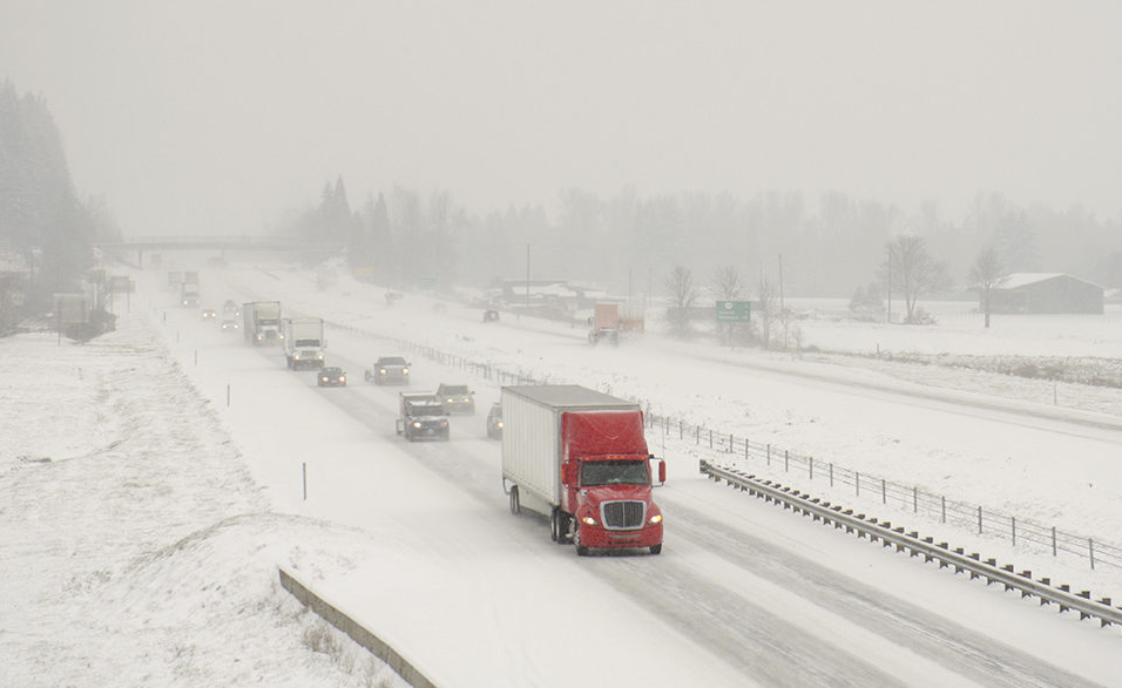What are the restrictions for Truck Drivers in Winter Weather?

The recent winter vortex has brought hazardous weather across the United States. From power outages in Texas to a negative 30 degree windchill across the Midwest, the extreme temperatures created serious safety hazards. In addition to the dangerous temperatures, winter storms also brought snow and ice that covered major interstates and highways. There seemed to be a nonstop stream of news reports highlighting serious injuries from pileups and crashes with semi trucks.
A common question we are asked as truck accident attorneys; “Are semi trucks allowed to drive in snow and ice?” The answer is yes. Trucks may drive in snow and developing ice when, and only when, safe driving is possible.
There are three specific circumstances that the common CDL manuals address for drivers:
- Driving slow and smooth on slippery roads is essential. Kan. CDL Handbook § 2.13.2. The CDL manual specifically warms that “if it is very slippery, you shouldn’t drive at all. Stop at the first safe place.” In other words, the issue is not if snow or ice is falling; the issue is how slick the roads are under the conditions.
- Drivers must leave plenty of following space on any road to allow additional time to stop. Kan. CDL Handbook § 2.13.2. Drivers are specifically warned to avoid getting into traffic jams where slamming on the brakes is even necessary. It is difficult to control a fully loaded semi weighing 80,000 pounds in normal conditions but stopping quickly on slick roads is nearly impossible. As a result, the CDL manual instructs drivers to “anticipate stops early and slow down gradually,” which is only possible by making sure there is plenty of room to come to a slow stop in traffic.
- Winter conditions require extra care during pre-trip inspections before drivers even reach the roadway. Kan. CDL Handbook § 2.13.1. The CDL manual includes an additional section to cover special items of emphasis during pre-trip inspections. These include inspecting tire chains, checking all lights and reflectors, and being sure that coolant and defrost systems are working properly before beginning to drive in winter weather.
While the CDL manual provides specific instruction for drivers in winter conditions, many drivers face pressure from shipping companies to drive in unsafe conditions so cargo can be delivered. It is important for any driver to be careful around semi trucks in winter conditions, as pressure to drive may override safety concerns. In the end, public safety should be the focus for all trucking companies in hazardous conditions.
If you or a loved one has been injured in a truck accident, please contact us today at 620.227.8126.